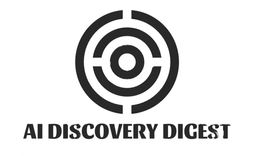Welcome to the era where technology is revolutionizing every aspect of our lives, including education. Artificial Intelligence (AI) has emerged as a game-changer in academic training programs, offering innovative solutions to enhance learning experiences. In this blog post, we will explore the integration of AI in educational settings and delve into its advantages, examples of successful implementation, potential challenges, and the crucial role educators play in harnessing its power effectively. Let’s embark on a journey to discover how AI is reshaping the future of education!
Advantages of Integrating AI in Academic Training Programs
AI integration in academic training programs offers numerous advantages that revolutionize the way students learn. One key benefit is personalized learning, where AI algorithms tailor educational content to individual student needs and pace. This adaptive approach ensures that each student receives targeted support, enhancing their understanding of difficult concepts.
AI can streamline administrative tasks for educators, allowing them to focus more on teaching and mentoring students. By automating grading processes and organizing schedules efficiently, teachers have more time to engage with students on a deeper level.
Another advantage is the accessibility of resources through AI-powered tools like virtual tutors or online interactive platforms. These resources provide additional support outside traditional classroom settings, enabling students to reinforce their learning anytime, anywhere.
AI can analyze vast amounts of data to identify trends in student performance and areas for improvement. This data-driven approach allows educators to make informed decisions about curriculum adjustments and interventions tailored to enhance student outcomes effectively.
Examples of Successful Implementation of AI in Education
Imagine a classroom where students receive personalized learning experiences tailored to their needs and abilities. This is made possible through AI algorithms that analyze data to create customized lesson plans for each student.
In higher education, universities are using AI chatbots to provide instant support to students, answering questions about courses, schedules, and even mental health resources.
AI-powered grading systems can provide immediate feedback on assignments, saving teachers time and allowing students to learn from their mistakes more efficiently.
Virtual reality simulations enhance hands-on learning in subjects like science and engineering, giving students the opportunity to experiment in a safe environment before applying their knowledge in real-world settings.
These examples demonstrate how AI is transforming traditional teaching methods and revolutionizing the way we approach education.
Potential Challenges and Drawbacks of Using AI in Academic Training
Implementing AI in academic training programs comes with its fair share of challenges and drawbacks. One major concern is the potential lack of personalized learning experiences for students. AI algorithms may not always cater to individual learning styles or preferences, leading to a one-size-fits-all approach that might not be effective for every student.
Another challenge is the issue of data privacy and security. With AI collecting vast amounts of student data, there are concerns about how this information is being used and whether it is adequately protected from breaches or misuse. Maintaining transparency and ensuring ethical use of data becomes crucial in such scenarios.
There’s the risk of over-reliance on AI technology, which could lead to a reduction in critical thinking skills among students. Relying too heavily on AI tools for tasks like problem-solving or decision-making may hinder students’ ability to think independently and creatively.
Balancing these challenges while harnessing the benefits of AI in education remains a key area where educators need to navigate carefully moving forward.
The Role of Educators in Utilizing AI Effectively
Educators play a crucial role in harnessing the power of AI to enhance academic training programs. By embracing new technologies, teachers can create more personalized learning experiences for students. This can lead to increased engagement and better retention of information.
One key aspect is providing professional development opportunities for educators to learn how to effectively integrate AI tools into their teaching strategies. By staying informed and adaptable, teachers can leverage AI’s capabilities to cater to diverse learning styles and needs within the classroom.
Educators need to guide students on using AI ethically and responsibly. Teaching critical thinking skills alongside technology literacy ensures that students understand the implications of relying on AI for decision-making processes.
By empowering educators with the knowledge and resources needed to utilize AI effectively, we pave the way for a future where technology enhances rather than replaces traditional teaching methods.
The Importance of Finding a Balance between AI and Traditional Teaching Methods for Effective Learning
In today’s rapidly evolving educational landscape, the integration of AI in academic training programs has shown immense potential to enhance learning outcomes and student engagement. By leveraging the power of artificial intelligence, educators can personalize learning experiences, provide real-time feedback, and streamline administrative tasks.
While there are undeniable advantages to incorporating AI into education, it is crucial to acknowledge the importance of finding a balance between AI-driven tools and traditional teaching methods. Educators play a pivotal role in harnessing the benefits of AI while ensuring that students receive a well-rounded education that encompasses critical thinking, creativity, and human interaction.
By embracing a hybrid approach that combines the strengths of both AI technology and traditional teaching practices, we can create an inclusive learning environment that empowers students to thrive in an increasingly digital world. As we continue to explore the possibilities offered by AI in education, striking this delicate balance will be essential for driving meaningful educational advancements and preparing students for success in the future.


